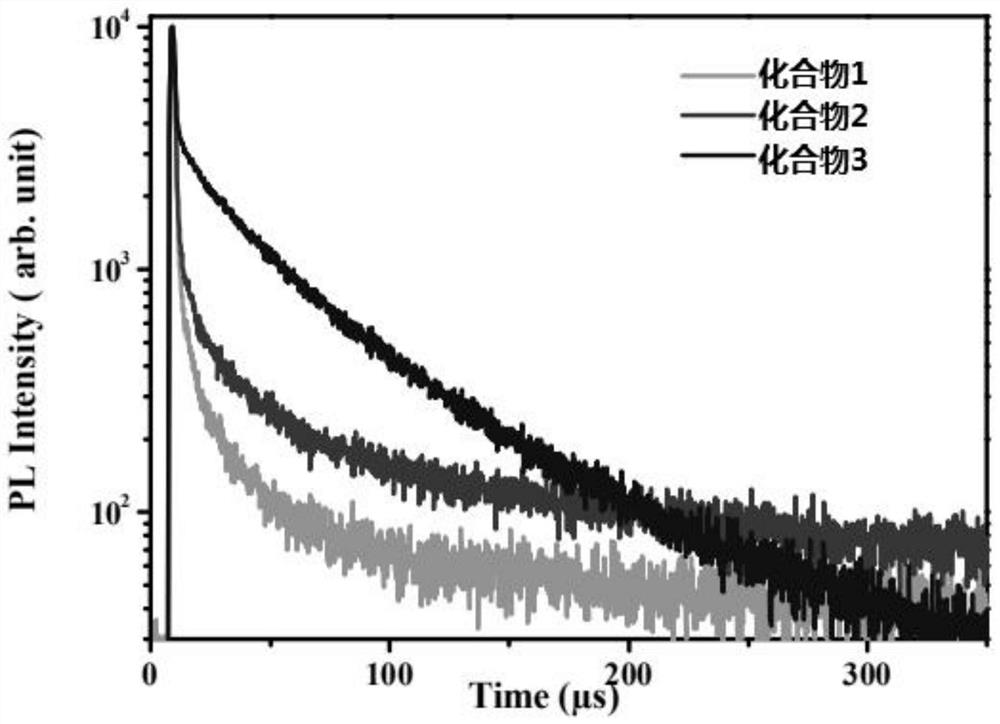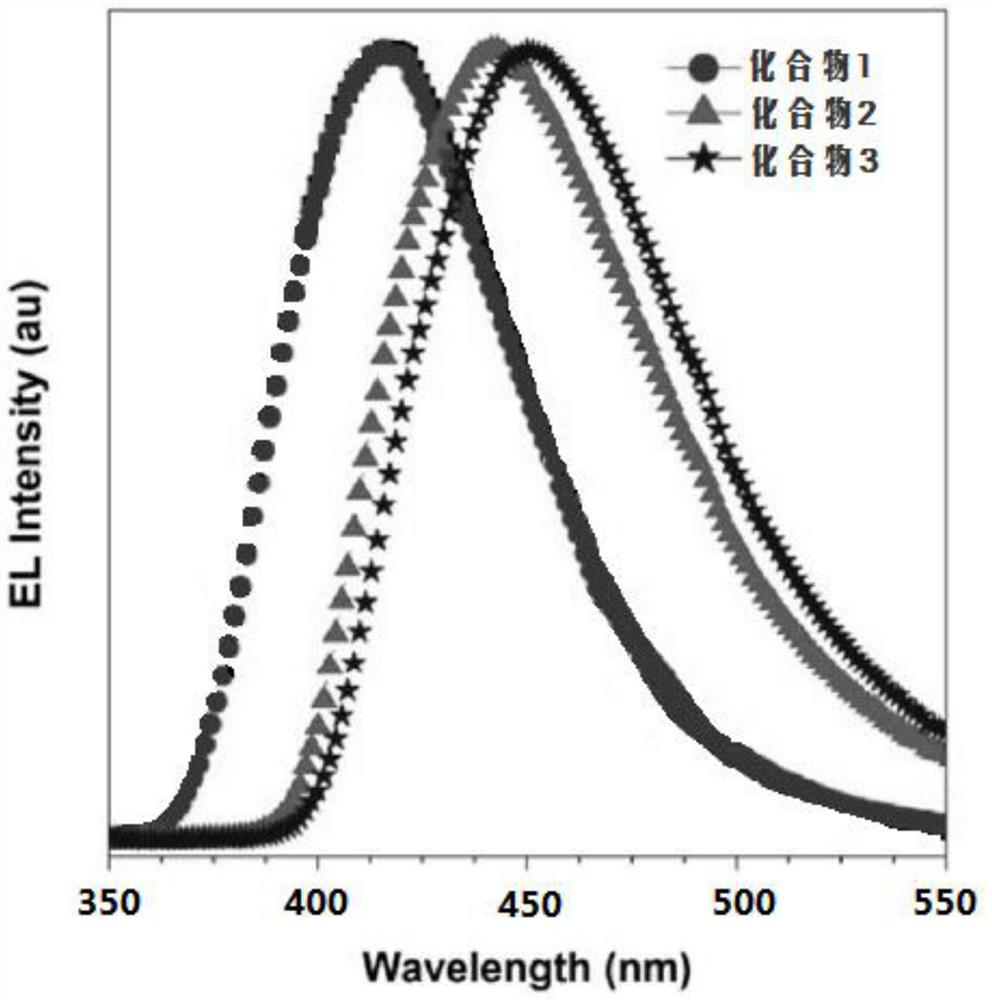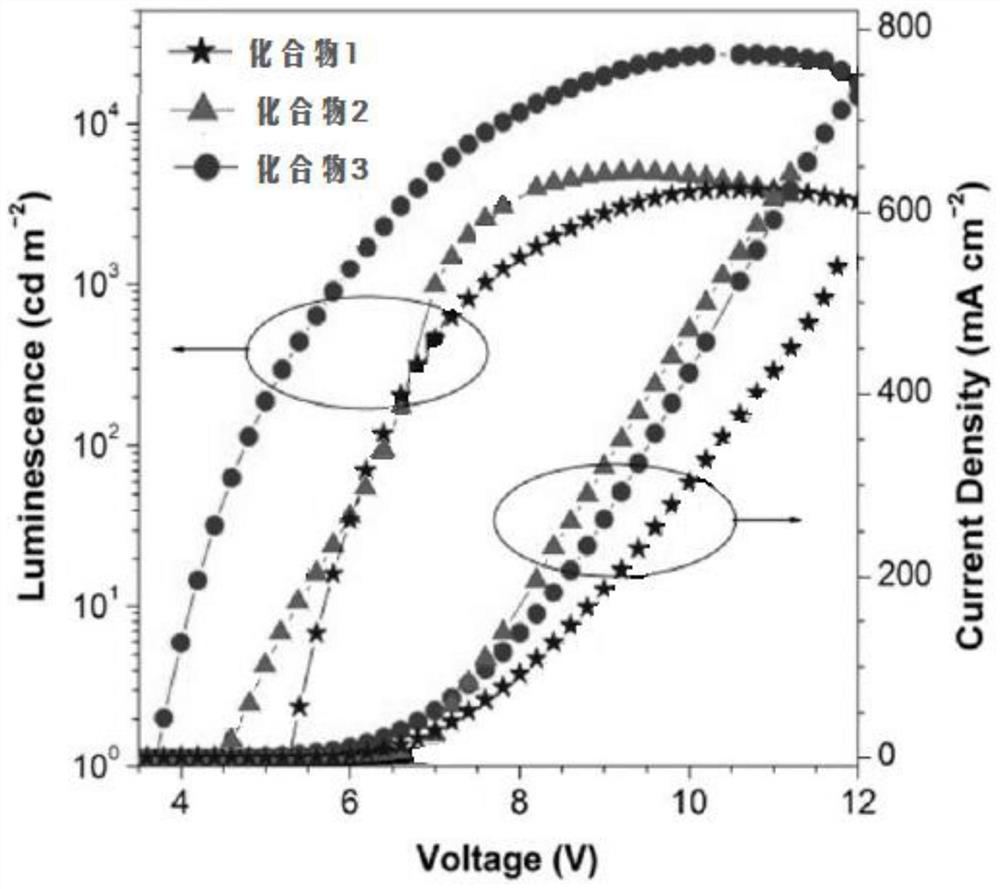Thermally activated delayed fluorescent material and preparation method thereof
A technology of thermally activated delayed and fluorescent materials, applied in the fields of luminescent materials, chemical instruments and methods, organic chemistry, etc., can solve the problem of low efficiency and so on
- Summary
- Abstract
- Description
- Claims
- Application Information
AI Technical Summary
Problems solved by technology
Method used
Image
Examples
Embodiment 1
[0016] At room temperature, the 1,3,3a 1 , 4,6,7,9-Naphthalene (1.73g, 10mmol) was added to a 100ml single-port reaction flask, and then an appropriate amount of solvent DMF was added until 1,3,3a 1 , 4,6,7,9-Naphthalene was completely dissolved (about 80ml), liquid bromine (2ml, 40mmol) was dissolved in 3ml of DMF solution, added dropwise to the reaction system, and reacted in the dark for 4 hours . Add water to stop the reaction, extract with DCM, wash several times with a large amount of deionized water, collect the organic liquid, and concentrate. The crude product was separated and purified by column chromatography to obtain 2,5,8-tribromo-1,3,3a 1 , 4,6,7,9-heptaazyridine (3.07g, yield 76%), its chemical reaction equation is:
[0017]
Embodiment 2
[0019] N, N-diphenyl-4-(4,4,5,5-tetramethyl-1,3,2-dioxaborolan-2-yl)aniline (18.56g, 50mmol) 2,5 ,8-Tribromo-1,3,3a 1 , 4,6,7,9-heptaazyridine (4.09g, 10mmol) and catalyst Pd(PPh 3 ) 4 (0.74 g, 0.6 mmol) were mixed in toluene (80 mL). Will K 2 CO 3 Aqueous solution (5.2 g, 38.5 mmol) was slowly added to the reaction mixture, and after bubbling nitrogen for 30 min, the reaction mixture was heated to 80° C. under nitrogen and refluxed for 10 h (reaction progress was monitored by TLC). After the reaction was complete, it was diluted with ethyl acetate (150 mL). The organic layer was washed with brine solution, water and washed with anhydrous Na 2 SO 4 Dry, filter, and remove solvent in vacuo, obtain compound (compound 1) (5.02g, productive rate 65%) shown in formula (I), its chemical reaction equation is:
[0020]
Embodiment 3
[0022] The difference between this example and Example 2 is: the reaction time of Example 2 was 10 h, and the reaction time of this example was 14 h, and compound 2 (5.41 g, yield 64%) was finally obtained.
PUM
| Property | Measurement | Unit |
|---|---|---|
| luminance | aaaaa | aaaaa |
Abstract
Description
Claims
Application Information
 Login to View More
Login to View More - R&D
- Intellectual Property
- Life Sciences
- Materials
- Tech Scout
- Unparalleled Data Quality
- Higher Quality Content
- 60% Fewer Hallucinations
Browse by: Latest US Patents, China's latest patents, Technical Efficacy Thesaurus, Application Domain, Technology Topic, Popular Technical Reports.
© 2025 PatSnap. All rights reserved.Legal|Privacy policy|Modern Slavery Act Transparency Statement|Sitemap|About US| Contact US: help@patsnap.com



